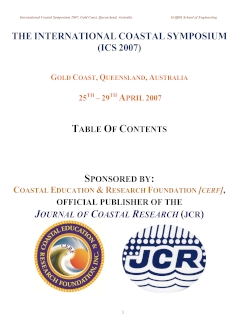The International Coastal Symposium (ICS 2007)

A Framework for the Uptake of Satellite Derived Bathymetric Data Services in Coastal Zone Management
Two-Dimensional Digital Particle Tracking Velocimetry Algorithm Based on the Image of Particle Trace
Ground based remote sensing as a tool to measure spatial wave field variations in coastal approaches
Impact of Jetty Construction on the Current and Ecological Systems in an Estuary with a Narrow Inlet
